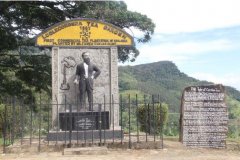Why do foreigners like drinking coffee? This paper briefly introduces the origin and development history of foreign coffee.
The earliest coffee beans originated in Ethiopia. In 525 AD, Ethiopian troops invaded Yemen, and coffee beans were brought to Yemen by soldiers. According to records, coffee trees began to be planted in Yemen in 575 AD. Later, coffee beans were also brought to Egypt by Sudanese black slaves who were shipped to Egypt. After coffee was introduced into the Arab world, it was originally used by Arabs as a herb to treat migraines and promote digestion. Later, the Arabs invented roasting coffee beans to make a coffee drink, which conquered the Arab taste with its unique aroma and rich flavor, and the Islamic habit of banning alcohol played a role in the spread of coffee at that time. Coffee is called "the drink given by Allah" by Arabs. It is recorded that cafes appeared in Damascus, Mecca and other places in the 15th century. After the Ottoman Turkish Empire conquered the Arab world, it developed coffee into a "national drink" and developed coffee etiquette and mysterious coffee divination. Before the 16th century, coffee was regarded as a very precious drink in the Arab world, and Arabs, especially Yemen, which grew coffee, also monopolized coffee production and strictly prohibited the outflow of coffee seeds and saplings.

Introduced into Europe:
The Ottoman Turkish Empire in the 16th century was the center of East-West trade. Coffee, a mysterious drink, naturally attracted the attention of East and West businessmen, who not only formed the habit of drinking coffee themselves, but also wanted to bring this precious drink back to their country. As early as the end of the 16th century, merchants in Venice, Marseilles and London began to secretly bring a small amount of coffee beans home to receive friends with coffee at home.
In 1616, Venice merchants officially imported a bag of coffee beans to Italy for the first time. Europeans covet the seeds and saplings of coffee. In 1615, the Dutch smuggled a coffee sapling out of the port of Mocha, transported to the Netherlands and planted in a greenhouse. Coffee, a "fashionable" and "mysterious" drink from the "Eastern Ottoman Empire", was quickly accepted by Europeans, and a number of cafes came into being. In the coffee shop, people can get together to talk about current affairs, politics and various topics while drinking coffee. In addition, the coffee shop has also become a gathering place for some literati and artists. Coffee has quickly spread in Europe and penetrated into people's lives.
Introduced to North America:
The earliest record of coffee in North America was probably in 1668. At the end of the 17th century, tea, cocoa and coffee were spread to North America at the same time, and tea drinking became more popular. After the famous Boston tea pouring event in 1773, coffee naturally replaced tea as the main drink.
Large-scale spread around the world:
The widespread popularity of coffee in Europe has also brought some problems. A large number of imported coffee beans have caused large foreign exchange losses, coupled with the threat of freedom of speech in cafes to the rule of the authorities. At that time, the rulers of European countries first adopted a "cost-saving" approach to close cafes and ban people from drinking coffee, but coffee and cafes have become a trend, repeatedly banned, so "open source" has become a more in line with the situation. However, the climate of continental Europe is not suitable for coffee growth, so the European empires, which are in the period of colonial expansion, began to aim at their own colonies and open up coffee production areas in the tropics of Asia, Africa and Latin America.
Introduced to Asia:
Coffee saplings shipped by the Dutch to the Netherlands in 1616 could not be planted on a large scale because they could not adapt to the cold climate in the north, so the Dutch transplanted them to Ceylon in 1696 and to Jakarta, Indonesia, in 1699. Indonesia became the first country in Asia to produce coffee on a large scale.
As the birthplace of Islam, Mecca, Medina and Jerusalem, as holy cities of Islam, have also attracted a large number of Eastern Muslims to make pilgrimages. These pilgrims also have the opportunity to taste coffee in Arabia and repeatedly try to take it out of the Arab world. As early as the 17th century, during a pilgrimage to Mecca, Babudan, an Indian Muslim, secretly took seven coffee beans out of Yemen and transported them to southern India, where coffee was introduced into India.
Introduced to Central and South America:
In the 1820s, French naval officer de Klee transported a coffee sapling to Martinique Island in Central America, and Martinique coffee saplings were spread to Haiti, Dominica and other Central American island countries.
At the same time, coffee seedlings were spread to Cuba and Jamaica in Britain.
Coffee is grown on a large scale in French Guiana, Suriname, Haiti and other countries.
Spain grows coffee in its own territories such as Colombia and Peru.
Coffee seedlings spread from French Guiana to Brazil, where the coffee industry sprang up and became the largest producer in the world at the beginning of the 20th century.
Introduced to Africa:
At the end of the 19th century, coffee was widely grown in British colonies in Africa. In 1893, the coffee industry of Kenya, the neighbor of Ethiopia, began to develop and rapidly developed into a high-quality coffee producer.
Introduced to Hawaii:
Coffee spread to the Hawaiian islands in 1825.
Introduced to Australia:
Coffee was first introduced to Australia in the 1880s.
Coffee spread to the Hawaiian islands in 1925.
So far, with Brazil as the leader, with the Tropic of Cancer as the boundary, coffee planting territory has been formed across the east and west of the earth, stretching across the four continents of Asia, Africa, the United States and Australia.
Because the caffeine in coffee can be exciting, which can make people more energetic to work.
In fact, life in developed countries is fast-paced and stressful, and without a cup of coffee to adjust it, it is really difficult for ordinary people to bear it for a long time.

Important Notice :
前街咖啡 FrontStreet Coffee has moved to new addredd:
FrontStreet Coffee Address: 315,Donghua East Road,GuangZhou
Tel:020 38364473
- Prev

The History of Tea Industry in Sri Lanka and the Historical Story of James Taylor, the Father of Ceylon Black Tea
Sri Lanka's history is as fascinating as the country itself. Many years ago, the country had a strong culture and heritage, and it was ruled by kings for many generations. As early as the 16th century, the country was invaded by many foreign forces who came here in search of spices, gems and other treasures. Since the beginning of colonial history in the 16th century, the country has been dominated by the Portuguese, the Dutch and
- Next

Coffee is so bitter, why would anyone like it? What is the reason?
In fact, the root cause of coffee bitterness is the deep baking degree, and people usually feel bitter because of tons of coffee. In the case of moderate roasting (or lighter roasting), coffee is more sour than bitter, and there are several types of coffee lovers: caffeine addicts, coffee lovers, coffee makers. Caffeine addiction needless to say, addiction will demand. Because in the coffee
Related
- Beginners will see the "Coffee pull flower" guide!
- What is the difference between ice blog purified milk and ordinary milk coffee?
- Why is the Philippines the largest producer of crops in Liberia?
- For coffee extraction, should the fine powder be retained?
- How does extracted espresso fill pressed powder? How much strength does it take to press the powder?
- How to make jasmine cold extract coffee? Is the jasmine + latte good?
- Will this little toy really make the coffee taste better? How does Lily Drip affect coffee extraction?
- Will the action of slapping the filter cup also affect coffee extraction?
- What's the difference between powder-to-water ratio and powder-to-liquid ratio?
- What is the Ethiopian local species? What does it have to do with Heirloom native species?

